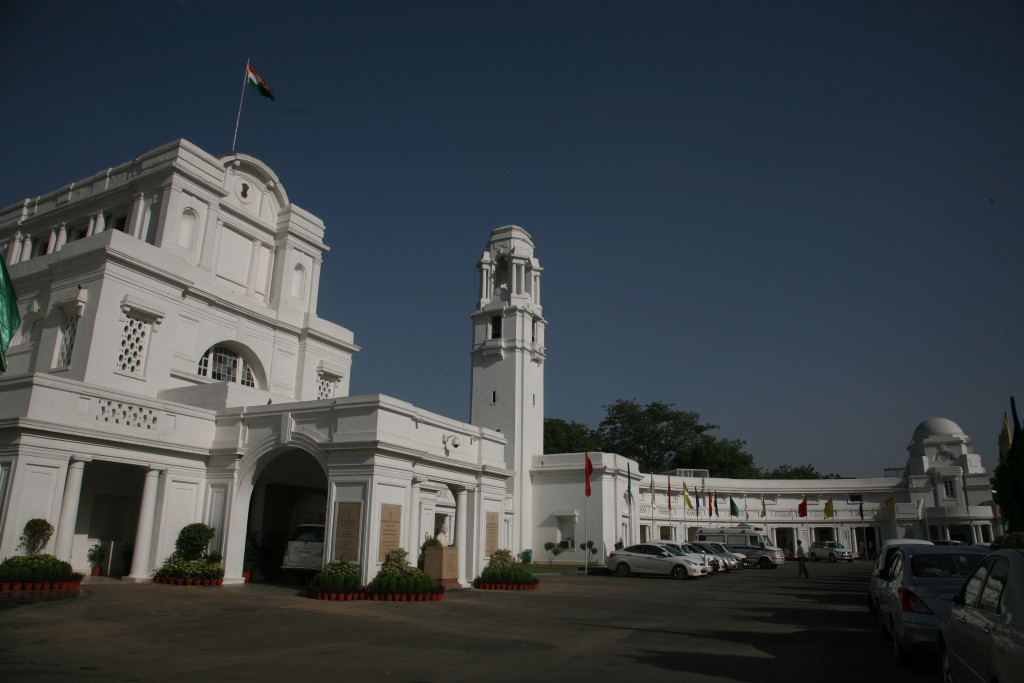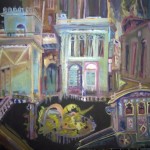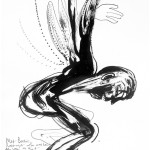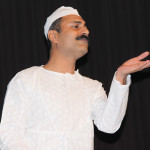Delhi’s first modern building: The Old Secretariat
 Arguably, this is the first modern building of New Delhi that came up after Delhi became the capital of India in 1911. The Delhi Legislative Assembly (Old Secretariat) building, also known as Vidhan Sabha, was built in 1912 and designed by E. Montague Thomas. He designed this building much before Edwin Lutyens and Herbert Baker came here to design buildings for the new capital of India. Sadly, unlike other British architects who designed many great buildings in Delhi, there is not much information available about E. Montague Thomas.
Arguably, this is the first modern building of New Delhi that came up after Delhi became the capital of India in 1911. The Delhi Legislative Assembly (Old Secretariat) building, also known as Vidhan Sabha, was built in 1912 and designed by E. Montague Thomas. He designed this building much before Edwin Lutyens and Herbert Baker came here to design buildings for the new capital of India. Sadly, unlike other British architects who designed many great buildings in Delhi, there is not much information available about E. Montague Thomas.
In front of the main gate to the Delhi Assembly, the seat of power of the Delhi Government, there is a bust of Pandit Madan Mohan Malviya. Outside the oval-shaped central park and facing the two minarets are statues of Vithalbhai Patel and Mahatma Gandhi. Patel’s statue was installed in 1989 and Mahatma Gandhi’s was installed in 1992.
On March 15 1997, the statue of Chaudhary Brahm Prakash, Delhi’s first Chief Minister, was installed on the right side of the main gate. The central park has a granite plaque with the names of national leaders of the House of Legislature in Delhi. The plaque and the nearby Freedom Rock were unveiled by the then-Vice President of India on March 12 1998. The Old Secretariat is considered a very fine building with a portion facing Alipur Road curving gracefully in the centre like a half moon.
There are two minarets at each end with small domes decorating the corners. Four blocks are divided between the two sides of the council chambers. A large verandah with square archways and round pillars runs in front of the office. The cream wash of the structure is very pleasing to the eye. After Independence, the Old Secretariat building was given a facelift from time to time and its landscape improved. The building has been the venue of several national and international conferences such as the Presiding Officer’s Conference, 1986 and the Commonwealth Parliamentary Conference, 1991.
“While designing this building, Thomas earmarked around 10 acres of land for a garden in front of the assembly hall. This park also has a lovely fountain that is generally made operational whenever important functions are held in the lawn, when the Assembly is in session or when some foreign delegation or dignitary visits the Old Secretariat,” says Alimuddin Rafi Ahmad, Managing Director of ILD Group, who holds an active interest in old and heritage buildings.
A number of multi-coloured buntings around the lawn provide a majestic look to the building. After Delhi was made the capital city the building was constructed at old Chandrawal village in a few months time in 1912. The semi-circular, cream-coloured building had the privilege of housing the central legislature from 1913 to 1926. This building also set a style for bungalows that came up later. The first sitting of the Legislative Council was held in Old Secretariat on January 27, 1913. The first convocation of University of Delhi was held here on March 26, 1923. The Old Secretariat presently houses the Vidhan Sabha.
According to history, till 1911 Delhi was a province of Punjab. That changed when the British chose it as the new national capital after Calcutta (now Kolkata). However, there was no building which could house the state machinery. As the story goes, E. Montague Thomas was given just a year to design and construct a building that could house the Imperial Legislative Council. And as per the deadline, a sprawling Delhi Assembly building was readied in 1912. By January 1927, the Parliament House was ready and the entire government machinery was moved there. For 15 years until then the Assembly Hall was the highest seat of power in India.
The Rowlatt Bill was discussed here in the first week of March 1919 and Mahatma Gandhi was one of the visitors. Not much has changed since the time Gandhi sat in the visitor’s gallery. It was at the Assembly Hall that Delhi University held its first convocation. However, once the Parliament building was raised, the Assembly Hall started getting ignored by the public. It was only after Delhi got the partial-state status in 1952 that it started seeing some activity again. In 1926, the Government of India allotted the central portion of the building comprising the Assembly Hall and the adjacent rooms to the Delhi University on a monthly rental of Rs 350 and in September, the University took possession of the rooms. It gained importance once again in 1952 when Delhi was given an Assembly that was disbanded in 1956. In 1966, Delhi was given a Metropolitan Council. The deliberations of this council took place in this building.
Since December 1993, the Old Secretariat continues to be the seat of the Delhi Vidhan Sabha. Recalling those moments when he entered the historic building in 1952 as a newly elected member of the Delhi Assembly, the first CM of Delhi Chaudhary Brahm Prakash once told this writer in 1987 that he could not believe that he would work from there. “It was an imposing and beautiful building as those days there were not many buildings of that stature in the capital.”

















विवेक भाई हमेशा की तरह रोचक और जानकारी से भरपूर लेख। मेरी जानकारी मे अभी तक दिल्ली मे लुटियन जोन ही आधुनिक दिल्ली थी लेकिन लेख से मालूम चला कि दिल्ली सचिवालय सबसे पुरानी इमारत है।शुक्रिया